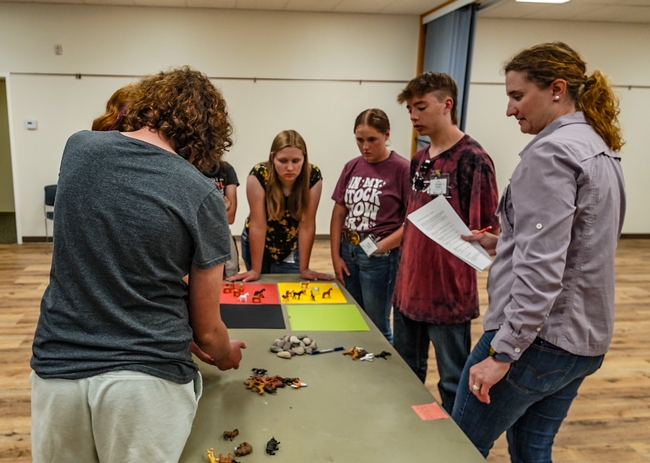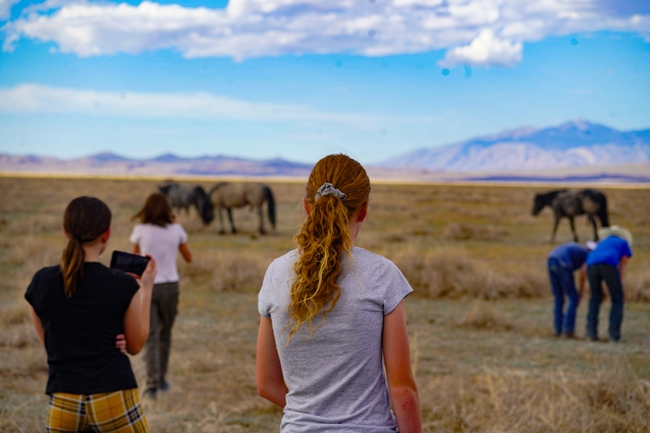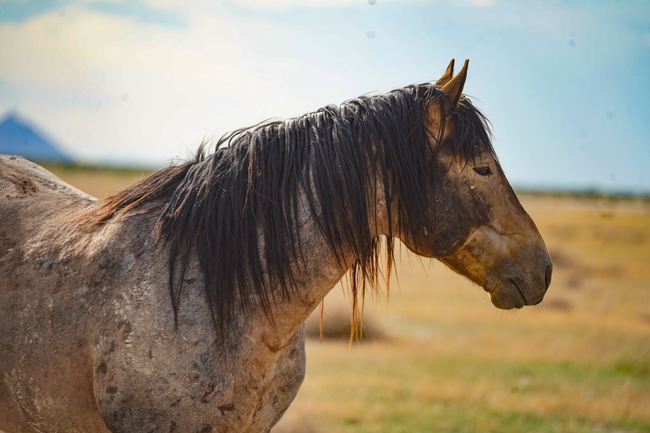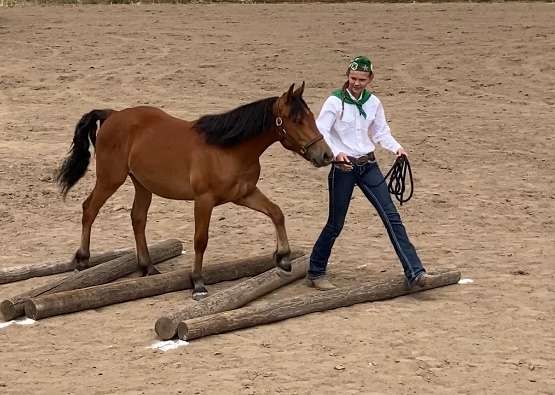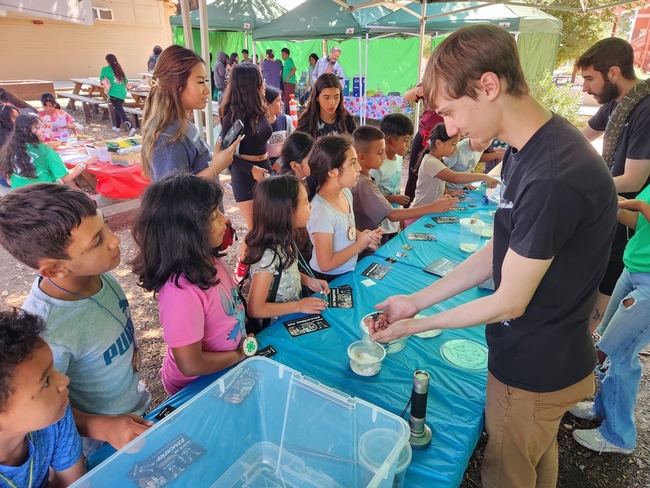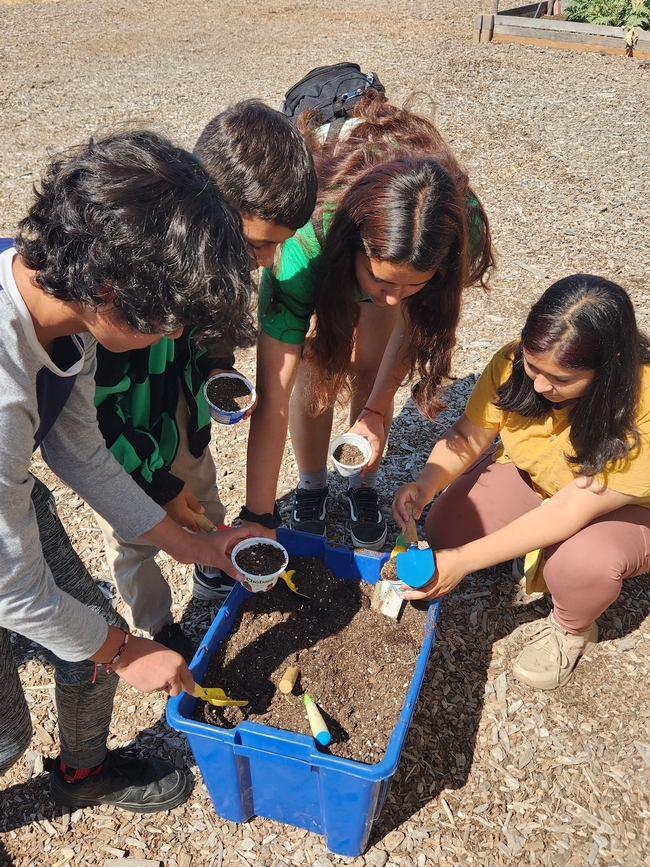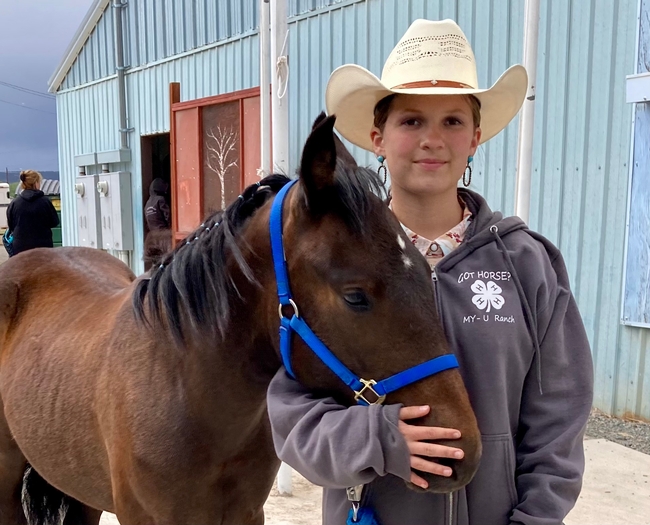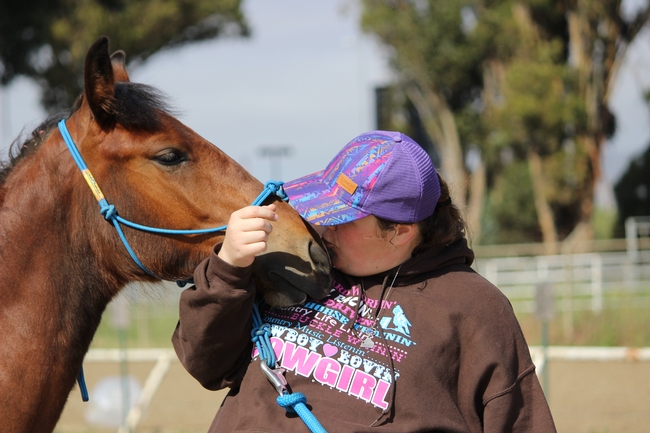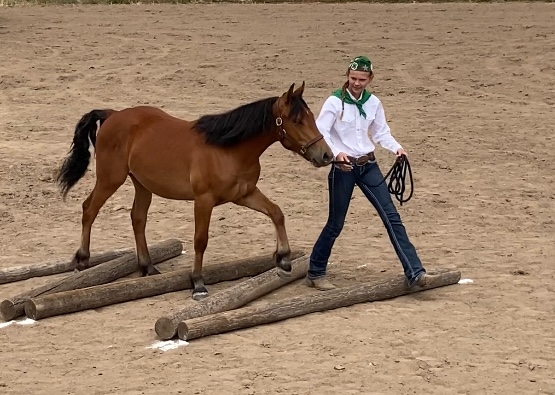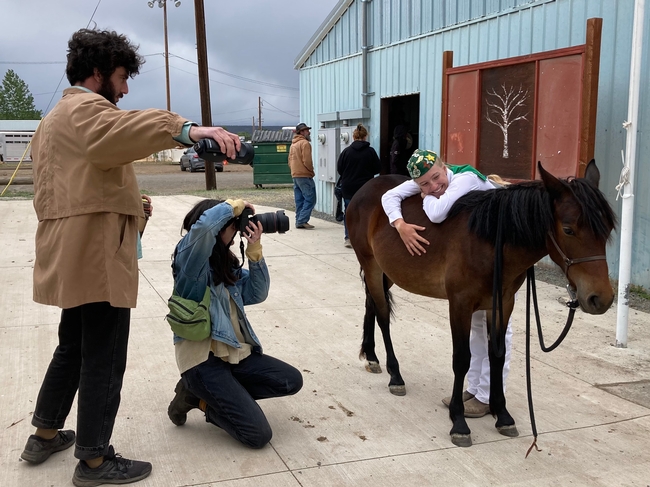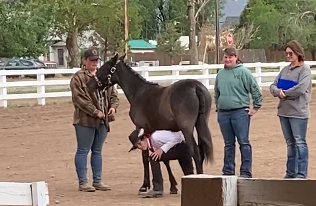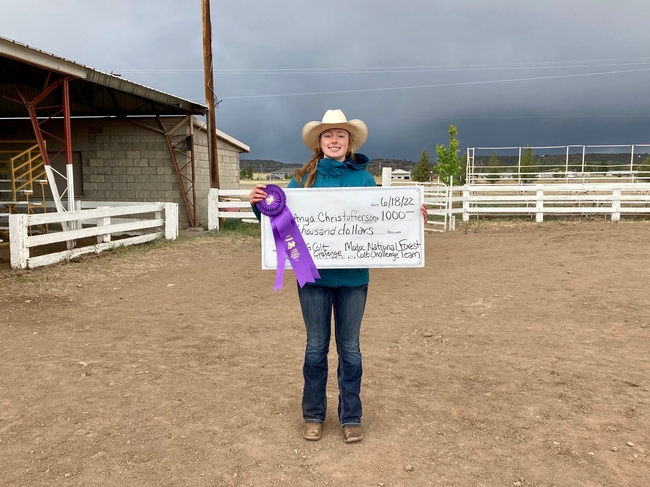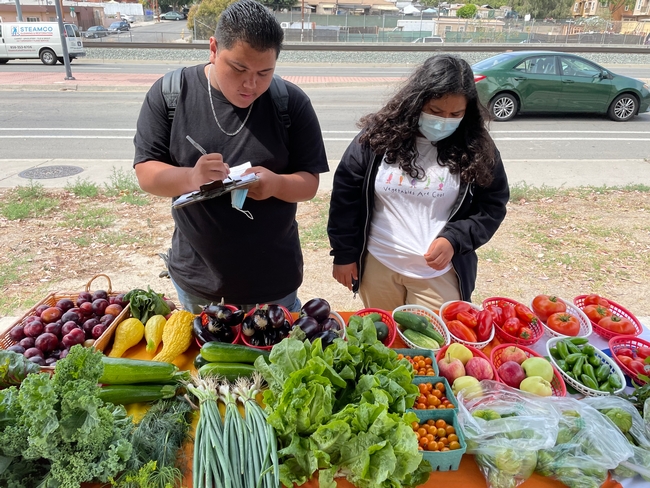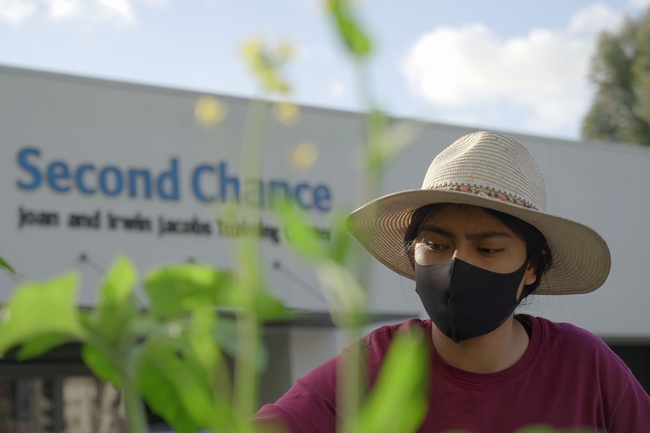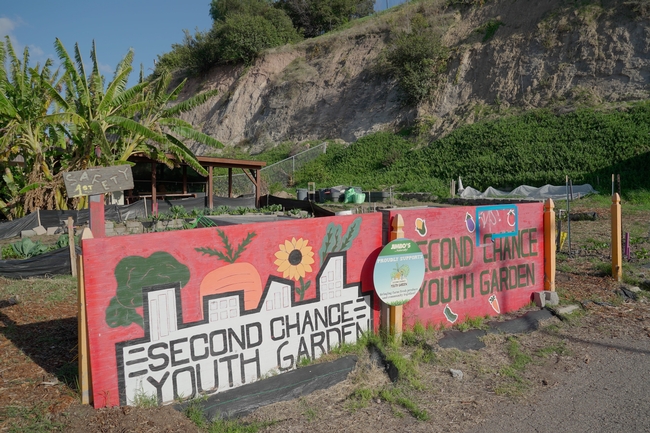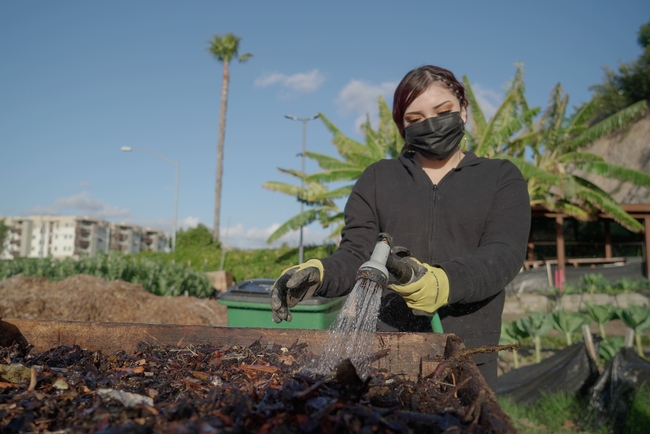Posts Tagged: Youth Development
4-H ag tech breakfast to support next generation of leaders, innovators
Event at FIRA USA in Yolo County includes look at agricultural robotics, automation
The FIRA USA ag tech conference, Oct. 22-24 in Woodland, showcases the latest robotics and automation innovations. A special breakfast during the event will support tomorrow's leaders, scientists and engineers who will realize the potential of those technologies.
Proceeds from the breakfast (Thursday, Oct. 24, 7:30 to 9 a.m. at the Yolo County Fairgrounds) will benefit higher education scholarships for 4-H youth participants interested in applying technology to a wide array of agricultural practices.
During the breakfast, attendees will hear from 4-H alumni – including Glenda Humiston, University of California vice president for agriculture and natural resources – on the impact of their participation in the program.
As a leading nationwide youth-development organization, 4-H delivers research-based, positive youth development practices through its community-based programs. Youth gain life and work readiness skills through hands-on projects. Studies have shown that youth who engage with 4-H programs are more likely to:
- Achieve academically
- Serve in leadership roles in school and community
- Engage in some form of community service
“4-H clubs, project teams and after-school programs develop skills in areas ranging from animal science to robotics, and from natural resources to coding,” said California 4-H Director Kimberly Sinclair Holmes, who will speak at the breakfast. “Scholarships help ensure those seeds of interest and passion blossom into meaningful careers that contribute to agriculture and society.”
Tickets are $100 each and can be purchased at https://bit.ly/4-HFIRAEvent.
The ticket includes all-day access to FIRA USA, touted as “the largest robot playground in the world,” where attendees can get an up-close look at laser weeders, autonomous harvesters, drone applications and a host of other ag tech innovations.
FIRA USA is a collaboration of GOFAR (Global Organization for Agricultural Robotics), Western Growers, UC Agriculture and Natural Resources, and The VINE.
Youth invited to Mustang Camp in Lassen County June 28-29
UC Cooperative Extension in Modoc County is partnering with Utah State University to offer a mustang camp for California youth ages 9 to 19.
The 4-H Mustang Camp, sponsored by the U.S. Bureau of Land Management, will be held on June 28-29.
This overnight camp is an opportunity for youth across California to learn about managing public lands, rangelands, wild horses and burros. Mustangs are feral horses that roam freely.
“We realize not everyone can take a wild horse home so we'll take the young people out on the range,” said event organizer Laura Snell, UC Cooperative Extension livestock and natural resources advisor for Modoc County.
“Participants will learn about range management, the grasses, habitat, ecosystem and wild horses,” she said.
Youth also will learn about careers with U.S. Bureau of Land Management and the U.S. Forest Service related to wild horse management.
Camp participants will spend the night at a campground and use facilities at the Lassen County Fair Grounds. Registration for the mustang camp is $75 and includes lunch and dinner on June 28 and breakfast and lunch on June 29. Space is limited to 25 youth.
“Our hope is that by participating in this camp these young people will leave understanding and appreciating the uniqueness of our wild horses and burros,” said Snell.
The 4-H Mustang Camp is sponsored by the BLM Wild Horse and Burro Program and UC Cooperative Extension in Modoc and Lassen counties. It will be held at Lassen County Fair Grounds at 195 Russell Avenue, Susanville, CA 96130.
Registration for camp is open through June 14. To learn more about the camp or to register, visit https://extension.usu.edu/utah4h/events/mustang-camp.
Colt Challenge on June 22
The public is invited to celebrate the five-year anniversary of the Devils Garden Colt Challenge on June 22 in Alturas in Modoc County. In the Colt Challenge, 4-H and FFA youth in California and in the Oregon border counties of Lake and Klamath take home young, wild horses in December to train, then gather in June to show their horses' progress. Attendance is free.
For more information about the Colt Challenge, visit https://www.devilsgardenucce.org/post/colt-challenge-faq.
Latino students shine (and squeal) at 4-H Nature Explorers Day Camp
University of California Cooperative Extension, 4-H Youth Development Program in Santa Clara County partnered with multiple community organizations to hold a 4-H Nature Explorers Day Camp at Escuela Popular Bilingual Academy in East San Jose from July 17 to July 21.
Organizers wanted to reach more participants this year than they had in the inaugural 2022 camp, so they structured the program for different K-8 grade levels to attend on different days. 79 campers participated, which was a 130% increase over the number of campers last year.
“Everything we did during the week was focused on environmental science,” said Susan Weaver, 4-H Regional Program Coordinator. “We partnered with Project Learning Tree, UC Environmental Stewards, UC Master Gardeners and CalFresh Healthy Living, UC– as well as community agencies related to the natural environment.”
Numerous activities engaged the youths such as field trips; demonstrations; and sessions themed around trees as habitats, birds and bugs, and being “leaf detectives.” 4-H Adult Volunteer, Laura Tiscareno, took charge of the hands-on Project Learning Tree sessions. Craft time included making nature-themed wind chimes and spinning paper snakes.
Bilingual teen camp counselors guided small groups of students for the duration of the day camp. In situations where the adult facilitator did not speak Spanish, teens translated information into Spanish for students with less English confidence.
“These kids call me ‘teacher' and it's awesome,” said Rodrigo, one of the counselors. “The camp benefits me a lot because I connect with children and in the future, I can even be a teacher if I wanted to.”
Another counselor, Andrea, learned about communication. “It's a bit different with kids at different age levels,” she said. “Since we had kindergarten through eighth grade, we had to switch our tactics from grade to grade so that they would understand us and we'd be able to understand them. Also learning how to bond with them so that they would pay more attention.
One highlight of the week was a field trip for third through eighth graders to the Master Gardeners location at Martial Cottle Park, where students learned about vermicomposting and made their own individual countertop worm habitat and composter.
Campers especially enjoyed the interactive demonstrations. “My favorite part is going on all the field trips because we went to a garden, and we've been catching worms and doing stuff about worms,” said one student. “It's really fun going on trips.”
Another camper said, “Something I would like to change about camp is having more time here.”
The program culminated in a Nature Camp Festival at Escuela Popular in partnership with community agencies. Youth enjoyed games, meeting reptiles, outdoor science activities, arborist crafts, a “Rethink Your Drink” table to make a fresh fruit drink, tamales, a nacho bar and more.
Representatives from the Silicon Valley Wildlife Center discussed animals that live in local neighborhoods and how the Center supports people to keep the animals safe. Victor Mortari of Vexotic Me talked about and showed snakes, spiders, scorpions, and other creatures, making the kids squeal while learning about them. As a fun added bonus, 4-H Community Educator Zubia Mahmood arranged to have a local team come to teach soccer skills as a healthy living activity.
The event increased the youth's interest in environmental education and involved Latino youth and adults who are new to 4-H – representing a community that has not historically benefited from the 4-H program. The teen teachers also increased their leadership and career readiness skills; post-camp surveys showed that all the teen counselors see 4-H as a place where they can be a leader and help make group decisions. Some campers noted in the survey that they wanted the camp to be every day, all summer!
National 4-H funded the camp in 2022 and 2023, allowing organizers to provide meals, T-shirts, water bottles and other items to foster belonging and promote healthy living. Community partners, crucial to the program's success, included the Boys and Girls Club of Silicon Valley, Escuela Popular Bilingual Academy, Silicon Valley Water and Silicon Valley Wildlife Center.

Teen counselors and campers working on a nutrition activity.
Wild horses and youth learn patience and trust from each other
“There is much we can learn from a friend who happens to be a horse.” — Aleksandra Layland
“Training mustangs is just so much fun,” said Aubrielle, as a chestnut-colored filly named Zuri nuzzled the 4-H member from Shasta County. Six months earlier, the young wild horse was wary of being touched. Now she was sporting accessories in her styled mane that matched the teenager's turquoise jewelry.
Over the past few years, UC Cooperative Extension in Modoc County has partnered with Modoc National Forest to provide public outreach and education to support the placement and care of wild horses from Devil's Garden at the northeastern corner of California. Adopting foals reduces overpopulation of wild horses, which can harm rangeland and the health of the mustangs themselves.
This year Laura Snell, UC Cooperative Extension livestock and natural resources advisor in Modoc County, assigned weanling wild horses to 40 youth between the ages of 9 and 19 from all over the state. The mustangs were 4 to 6 months old in January when they were picked up in Alturas and taken home by California 4-H and FFA members, who feed and care for them.
“The moment when I got to touch him for the first time is probably one of the biggest parts of training as well as my progress with him,” said Morgan of Monterey County, who spent hours in the stall with Bowie trying to gain his trust.
“It was really amazing to me that I was able to touch him on day 5,” she said. “In the videos I watched leading up to getting him, most of the time it took one week to three weeks for the people in the videos to touch their wild mustangs. At that moment is when you really start to make that bond with a wild mustang.”
“The moment when I got to remove his tag was a huge part as well because at that moment you know that the mustang trusts you enough that he is letting you get that close to remove the tag,” Morgan said.
The young trainers teach the horses to wear a halter, to load and unload from a horse trailer and to navigate through obstacles. Some participants also work on tricks such as laying their horse down, walking the horse backward and walking under the horse. In June, the participants gathered in Alturas to show their progress.
“It provides them an opportunity to seek out adult mentors who are horse trainers, learn responsibility, and learn a variety of things about caring for a wild horse and learning more about themselves in the process,” said Snell.
“We find that the youth do very well with wild horses. It's really a two-way street, with the horses learning just as much as the youth are in the six months they are in training,” she added.
Sisters Kailey and Maddi in San Benito County both adopted weanling horses. Removing the tag after about three weeks was a turning point for Maddi and her horse Fiona.
“The significance of getting the tag off was we hadn't been able to get near her at all,” said Maddi. “She had some aggression toward people out of fear. So getting past that, getting to the point where she trusted me and I could get that halter on her and get close enough to get that tag off was just a huge achievement. After that, once she trusted me, she started doing really, really well and flying through her training.”
Because wildfires are part of life in California, she taught Fiona to step over flames so she won't be afraid if they need to evacuate, Maddi told KSBW reporter Brisa Colon.
“It has been amazing to be able to share this experience with another very close family,” said Aubrielle's mother Ashley Phipps. “Our daughters have gone through the entire journey together starting with visiting the corrals to pick horses together, all the way through the training process. My daughter is older than Brooklin and has been a great mentor to her, teaching Brooklin and her horse along the way. It has been such a confidence builder for my daughter! Our girls will never forget this experience!!! And I loved every moment of watching them grow through the ups and downs. This program is such a blessing.”
To qualify for the program, applicants must fill out an application which includes being enrolled in a horse program such as the 4-H Equine Project, show they have facilities and feed for the animals, designate a mentor and have their parents' approval.
The trainers and their horses competed in the Devil's Garden Colt Challenge on June 18 in Alturas, vying for awards in halter, showmanship and obstacle course with youth from 13 counties participating. Prizes totaled over $3,000.
Youth-run garden provides 10,000 pounds of produce for San Diego families
UC SAREP's Sustainable Agriculture and Food Systems grant helps support Second Chance garden
Fifteen-year-old Xavier knows the anger within him will never leave. “I can't ever get rid of it,” he said.
“I've always wanted to just fight for no reason; I just had an anger issue, losing my temper quick with people,” added Xavier, a ninth-grader in San Diego County. “I have high expectations of myself.”
Xavier is working to keep his emotions under control, and he has found a sense of calm through his volunteer work. He was an intern – and then a peer supervisor – in the youth-run garden of Second Chance, a San Diego-based organization that works to break the cycles of poverty and incarceration by providing housing and job training to adults and young people.
Operating their garden as a small farm business, youth in the program, ages 14 to 21, offer produce to the community through their farm stand and a CSA (Community Supported Agriculture) model.
“The project incorporates a ‘farm to fork' approach in which youth not only experience how to grow food, but how to cook and eat healthfully,” said Gail Feenstra, director of the University of California Sustainable Agriculture Research and Education Program, which has a grant program that funds research and education projects – such as the youth garden – supporting sustainable food systems.
“Second Chance works primarily with youth in communities of color, providing them with training and also helping them develop confidence in themselves,” Feenstra said.
Filling a critical need for fresh produce
Caelli Wright, program manager of the Second Chance youth garden, said that grant funds from SAREP – a program of UC Agriculture and Natural Resources – have been used to purchase the supplies needed to sustain the program. The garden has filled a critical need for produce during the COVID-19 pandemic.
“After the pandemic hit, we recognized the increased need for fresh food in our neighborhoods,” Wright said. “That need was already there – southeast San Diego is considered a ‘food swamp' or ‘food apartheid', if you will – and with the onset of COVID, that need just escalated with unemployment and complications in our food production systems.”
Through a partnership with UC San Diego Center for Community Health and Encanto Elementary School (located down the block from the garden), donations enabled the program to give its CSA shares to about 25 families at Encanto. Over the course of the pandemic, the youth have grown 10,000 pounds of produce to donate.
At the same time, the program helps the young participants grow. For Xavier, being outdoors with peers empowered him to develop positive relationships. Previously, as a student in a charter school program, he was not accustomed to interacting with people and groups. Volunteering in the youth garden has given him a fresh perspective and understanding of others.
“Learning to be patient with people and [to] accept sometimes that if I don't know something, I need to ask about it, because I used to be so in my ego that I thought I knew everything,” Xavier explained. “But I don't know everything – I just learned to accept some things…that's just being part of life. And that's something that the garden has helped me with, personally.”
Opportunities for personal, social growth
Developing – and redeveloping – social skills are especially important for students, as they return from the disconnections associated with remote learning.
“Right now, with a lot of students facing the aftermath of COVID and being restricted to learning at home and not getting as much social interaction in their daily lives, it's led to a lot of challenges, mental health-wise, and social and emotional learning-wise,” Wright said. “The garden program provides that opportunity that some youth have been missing out on.”
In southeast San Diego, such crucial opportunities for personal growth and career exploration are harder to come by, and Second Chance started the garden in 2012 to give youth a unique work experience and valuable skills. About 400 young people have participated in the program.
“The youth that we serve are coming from low-income neighborhoods that are underserved with resources,” Wright said. “They just are not exposed to the same opportunities [as those in higher-income areas] to build skills or be ready for the workforce or to reach higher education – so that's where our program comes in and helps deliver those needed services.”
Xavier, who originally came to the garden because he heard that landscaping could be a lucrative career, recently finished his second stint as a peer supervisor in the youth garden. With his new skills, he and his cousin are looking to start a business of their own, cutting grass and doing yardwork in their community.
And, late last month, Xavier transferred to a more traditional high school environment.
“Being in a charter school after two, three years,” he said, “I've realized I miss being around more people.”


